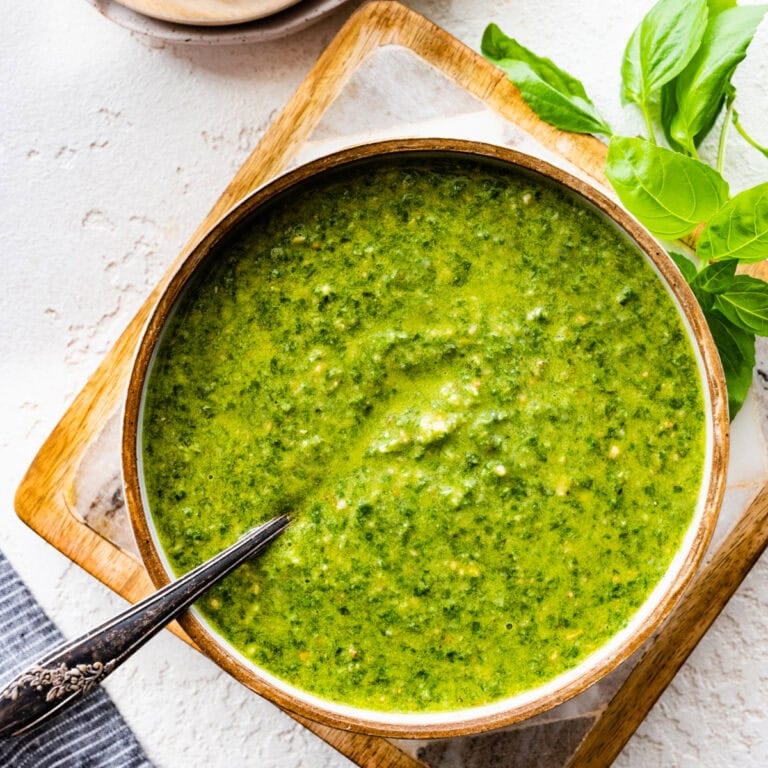Ingredients
- 4 tablespoons pine nuts
- 1 teaspoon sea salt
- 2 garlic cloves, peeled and quartered
- 4 packed cups sweet Italian basil, leaves picked, thick stems removed
- 1/2 cup good quality extra virgin olive oil (add as needed if consistency is too thick)
- 1/2 cup Parmigiano-Reggiano, (Parmesan cheese), grated
- 1/4 cup Pecorino Romano, grated
Instructions
- Combine all ingredients in food processor, Vitamix, or blender* and blend until coarsely combined or smooth depending on preference.
- I like to add the pine nuts last so I can control how course I want the pesto. I generally prefer smooth pesto, but chunky/more coarse is great too. Stop 3-4 times to scrape sides with spatula.
- Transfer to small glass bowl with a lid or canning jar. Top with 1/2 inch olive oil and chill. The olive oil on top prevents browning of basil when it stays stored in the fridge.
- Enjoy with pasta*, on sandwiches, or as a dip!
Notes
*Instruction Tip: A trick to avoid the risk of the heat produced by the food processor spoiling the pesto flavor is best to put the removable parts of the processor or the blender in the freezer for 20 minutes before using it.
Also, in order to reduce the amount of time the leaves are in contact with the blades (causing browning and spoiling flavor) put all your ingredients in the food processor at once using the maximum speed; if you work fast, you’ll get a great pesto.
It’s helpful to stop the processor three or four times to scrape the pesto from the sides with a spatula.
**Serving Tip: To serve with pasta, combine with a few tablespoons of pasta cooking water so it will coat the pasta evenly.
- Prep Time: 10 min
- Category: Savory
- Method: Italian
- Cuisine: Italian
